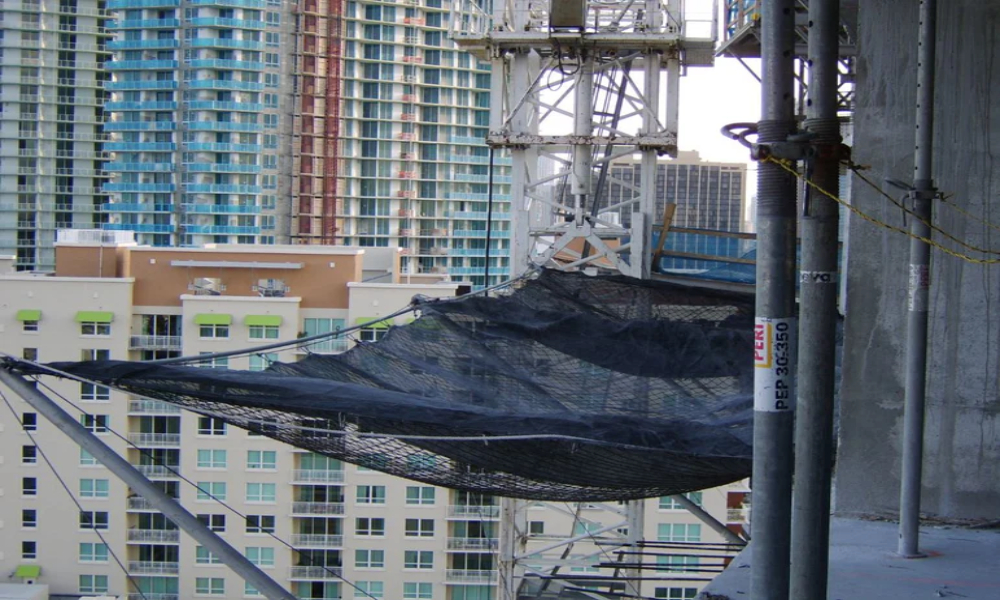How Vertical Debris Netting Protects Your Property During Construction Pro-jects

Construction sites can pose significant risks to surrounding properties, particularly when heavy equipment, materials, and debris are involved. One of the most effective safety measures for minimizing these risks is the installation of vertical debris netting. This protective system helps safeguard not only the site workers but also the adjacent properties, pedestrians, and vehicles. In this article, we will explore how vertical debris netting works and why it is essential for construction site safety.
What is Vertical Debris Netting?
Vertical debris netting is a strong, mesh-like material typically installed around the perimeter of construction sites. It is designed to prevent debris, tools, materials, and other objects from falling off elevated surfaces such as scaffolding, building facades, or rooftops. The netting acts as a barrier, catching any items that may inadvertently fall during the course of construction, thereby reducing the risk of injury or property damage.
Made from durable, weather-resistant materials, vertical debris netting is designed to withstand the weight of falling debris while remaining securely anchored to the structure. It is available in different strengths and sizes, depending on the requirements of the project and the height of the building under construction.
The Role of Vertical Debris Netting in Property Protection
- Prevents Falling Objects: One of the primary reasons vertical debris netting is used is to prevent falling objects from reaching the ground. On construction sites, tools, construction materials, and debris are often moved or dislodged, creating a risk for surrounding areas. Vertical debris netting creates a barrier that traps falling items, redirecting them safely back to the ground or onto the site. This greatly reduces the risk of damage to nearby properties, vehicles, and pedestrians.
- Minimizes Liability: Construction companies are responsible for ensuring the safety of their workers and the public. Vertical debris netting plays a vital role in minimizing the potential for accidents and injuries caused by falling debris. By using this protective measure, construction firms can demonstrate their commitment to safety, reducing the risk of costly liability claims or lawsuits arising from accidents.
- Protects Landscaping and Adjacent Structures: Nearby properties, including landscaping, vehicles, and structures, can suffer considerable damage from falling debris. A well-secured netting system ensures that anything falling from great heights is caught before it reaches the ground, protecting not only surrounding structures but also trees, gardens, and other landscaping features that could be easily damaged by construction debris.
- Maintains Cleanliness: Construction sites can create significant amounts of debris, from broken materials to scrap pieces of wood or metal. Vertical debris netting not only prevents these materials from falling but also helps maintain the overall cleanliness of the surrounding area. It catches smaller debris before it spreads to nearby streets, reducing the need for additional clean-up efforts and minimizing the environmental impact of the project.
How Vertical Debris Netting Enhances Worker Safety
In addition to protecting property, vertical debris netting also plays an important role in safeguarding workers on the construction site. It creates a secure barrier that helps prevent accidents caused by objects falling from heights. Workers are less likely to be injured by falling materials, tools, or equipment, which enhances the overall safety of the site and ensures compliance with safety regulations.
Furthermore, netting systems can help reduce the chances of workers inadvertently dropping materials or tools from elevated areas, adding an additional layer of security to the work environment.
Conclusion
Vertical debris netting is an essential safety feature for construction sites, protecting both property and individuals from the risks posed by falling debris. By acting as a barrier, it prevents materials from spilling onto surrounding areas, reducing the chances of accidents and damage to adjacent properties. Additionally, it ensures compliance with safety regulations, creating a safer environment for workers and the public alike. The installation of vertical debris netting should be considered a priority for any construction project, no matter the size, to safeguard investments, reduce liabilities, and maintain a safe working environment











